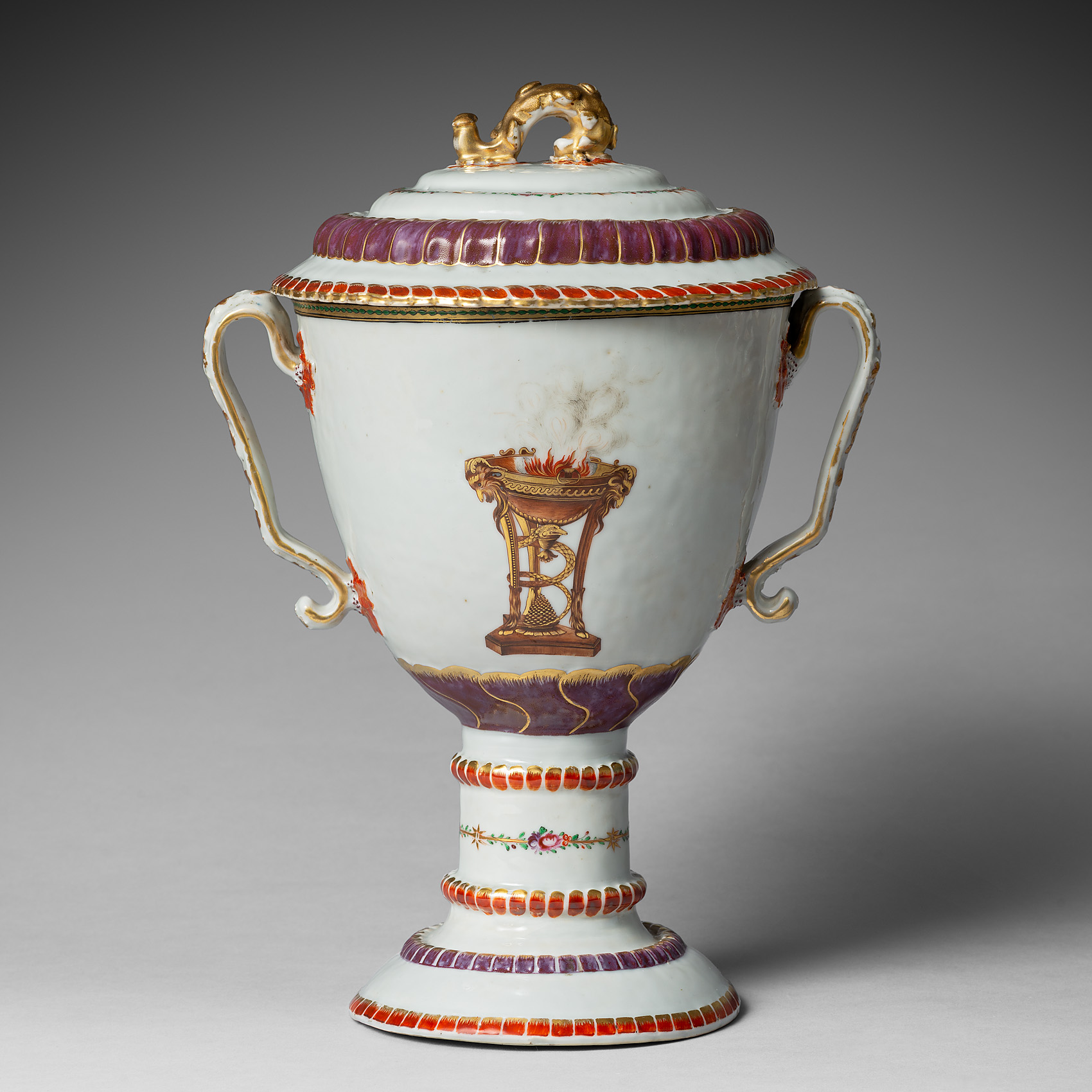Of U-shaped form bowl, decorated in the famille rose palette, with on either side with a burning brazier with ram’s heads and feet and a curling snake between its three legs. The cup is flanked by two molded handles on each side, supported by a cylindrical stem and splaying foot, the tiered cover with a scroll knop studded with shells.
